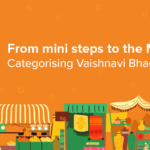Idli is one of the most beloved breakfast dishes in South India, enjoyed not only for its soft texture but also for its nutritional value and ease of preparation. Steamed to perfection, these rice and lentil cakes are typically served with coconut chutney and sambar, making for a wholesome, balanced meal. Its popularity extends beyond breakfast, as idli has become a cultural emblem in South Indian cuisine. While it may seem like a timeless, inherently Indian food, the story of idli has roots that go deeper and, surprisingly, cross geographical boundaries. The idli has evolved over centuries, shaped by local ingredients and customs, yet it still retains its original simplicity.
The History of Idli

The origin of idli is shrouded in mystery, with various theories surrounding its creation. Some historians propose that the origin of idli lies in Indonesia, where a similar steamed rice cake, known as “kedli,” was famous. Indian traders travelling to Southeast Asia may have brought the concept back to the Indian subcontinent, adapting the dish to local ingredients. Another theory suggests that Arab traders who introduced fermentation techniques to Indian cuisine played a role in idli history. Interestingly, early records from Indian texts mention a dish called “iddalige,” which is thought to be an early form of idli. However, this version was likely different, as it used different rice and urad dal combination or the fermentation process. The journey of idli is a testament to the blend of cultures and culinary techniques that have influenced Indian cuisine over centuries.
Evolution of Idli in India

Idli’s transformation into the dish we know today took place gradually, with mentions in ancient Indian texts like the Manasollasa (12th century) and the Kannada work Vaddaradhane. Originally, the history of idli differed significantly from the present-day version, as rice was less commonly used in early recipes. Over time, however, rice and urad dal became the main ingredients, and the method of fermenting the batter evolved to create the soft, fluffy idli we know today. With the spread of this culinary innovation, idli became a staple in South Indian households. By the late medieval period, idli was a well-established dish across Tamil Nadu, Karnataka, and other parts of South India. Its popularity only grew, fueled by its simplicity, nutritious profile, and suitability for all ages.
Idli Cultural Significance in South India

Idli is unique in South Indian cuisine, particularly in Tamil Nadu and Karnataka. Beyond being a popular breakfast item, it’s also a symbol of hospitality and tradition. In Tamil Nadu, idli is commonly prepared during festivals and family gatherings, highlighting its cultural significance. In Karnataka, idli is often accompanied by various chutneys, sambar, and sometimes even spicy powders, creating a versatile meal everyone enjoys. For many families, preparing idli is a cherished ritual, passed down through generations with personalized tweaks and techniques. The dish embodies South Indian values of simplicity, health, and community, as it’s often shared among family members or served to guests as a gesture of warmth and respect. Its cultural impact can be seen in its integration into South Indian identity, with each region adding its own twist to this age-old dish.
Order Authentic South Indian Idli from Swiggy Now

Craving the authentic taste of South Indian idli? Look no further than Swiggy! With just a few clicks, you can enjoy this traditional dish’s comforting, wholesome flavours delivered right to your doorstep. Swiggy offers a wide range of options from renowned idli restaurants near me, allowing you to customize your order with sides like coconut chutney, tomato chutney, and sambar. Whether you’re looking for a light breakfast, a filling brunch, or even a quick snack, Swiggy has you covered with authentic idli that’s fresh, hot, and packed with flavour. Treat yourself to a delicious cultural experience with every bite and savour the heritage of South India, one idli at a time. Order now and let Swiggy bring the taste of tradition straight to you!
Conclusion
The idli’s journey from a potentially foreign-influenced food to an iconic South Indian dish reflects the rich tapestry of cultural and culinary exchanges in India’s history. What started as a simple steamed rice cake has become a beloved staple that South Indians proudly call their own. Its preparation may have changed over centuries, but its essence remains tied to tradition, health, and family values. Today, idli is a celebrated part of South Indian heritage, enjoyed by people of all ages across India and beyond. Whether enjoyed as a homemade meal or ordered from a local eatery, idli holds a special place in the hearts of millions. This humble dish serves as a reminder of India’s diverse culinary landscape and the timeless appeal of food that connects generations.
FAQ
1. Who invented Idli?
The founder of idli remains a mystery, as its invention is not attributed to any single person or place. Historical evidence suggests that idli may have been influenced by foreign cuisines, particularly those from Indonesia and Southeast Asia, where similar steamed rice cakes existed. Some food historians believe that Indian traders visiting these regions might have brought back the idea of fermented rice cakes, adapting it to local tastes and ingredients.
2. Are There Different Types of Idli?
Yes, there are many variations of idli across South India, each with unique ingredients, flavours, and textures. Some popular types include: 1. Rava Idli – Made with semolina (rava) instead of rice, often flavoured with yoghurt and spices. 2. Mallige Idli – Known for its extra softness, this Karnataka speciality is made with a higher ratio of rice and a touch of poha (flattened rice). 3. Kanchipuram Idli – Originating in Tamil Nadu, this idli is spiced with cumin, pepper, and ginger and steamed in banana leaves. 4. Mini Idli – Smaller versions of the traditional idli, often served with sambar or in a sambar bath.
3. What Are the Key Ingredients in Idli?
The core ingredients of traditional idli are simple yet nutritious:
1. Rice – Typically a short-grain or parboiled rice is used, which gives idli its unique texture.
2. Urad Dal (Black Gram) – White, split urad dal is essential, as it contributes to the fluffy texture when fermented.
3. Salt – For flavour and to aid the fermentation process. These ingredients are soaked separately, ground into a batter, and left to ferment, creating the perfect texture for steaming. Variations may include additional ingredients like fenugreek seeds, poha, or semolina, but the classic recipe remains a simple combination of rice, dal, and salt.
Author Bio
Satisfying your cravings, one bite at a time. Discover the best eats, trends, and uncover the hidden gems with us to make your online ordering or dining experience a memorable one.










































































